Iris versicolor
A common wetland plant with blue-violet flowers gracing the top of the stem
Iris versicolor northern blueflag
A plant of bogs, swamps, wetlands and shallow water of lakes and ponds, blueflag iris forms dense clumps about 2.5 feet tall. The showy blue-violet flower with erect petals and broad sepals dwells on top of the stem. Swordlike green-grayish leaves flank the slender stalk. Most populations are distrubuted in the eastern and western parts of the state with scattered sites in central area.
Blueflag, a.k.a. larger blueflag is cross-fertilized by honeybees, bumblebees and the Syrphid flies that are often mistaken for bees. In return, the iris provides sustenance in the form of nectar for these insects. The iris's pollen-producing stamens are hidden inside the flower at the base of the three "falls," the drooping, bluish sepals with violet veins curving to the yellow runways that lead to the interior. To get inside, the insects crawl under the arching female styles where pollen is dislodged and pollination begins. Several small, long-tongued butterflies have "learned" to bypass the pollen trap and go directly to the nectar between the divisions, thus depriving the iris of cross-pollination.
If you have an opportunity to plant blueflags in wet areas, they are a beautiful, native alternative to the invasive European yellow iris (Iris pseudacorus).
Habitat & Range
Frequent in wet meadows, bogs, and marshes. Prefers full sun to part shade and organic, acidic soil.
Present in eastern and southern parts of the state, some population in central area.
Range: Labrador to Manitoba, south to Virginia, Ohio, Wisconsin, and Minnesota.
| EMP: | OBL |
|---|---|
| NCNE: | OBL |
Phenology
Flowers May through July.
Characteristics
Flowers violet-blue, 3 spreading outer sepals('falls') with yellow, green or white markings, 3 erect petals('standards'); stamens at base of sepals covered by 3 petaloid stigma lobes
Leaves narrow, sword-shaped, erect, glaucous, ½ to 1″ wide
Stems flattened
Rhizomes thick, short, fleshy
Fruit cylindrical, bluntly 3 angled capsules
Height 2-3 feet
Plant Codes
S-rank: S5 (Secure)
G-rank: G5 (Secure)
Ecology
Cross-fertilized by honeybees, bumblebees and the Syrphid flie. Muskrats feed on the root stocks.


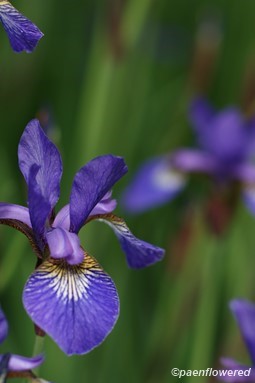
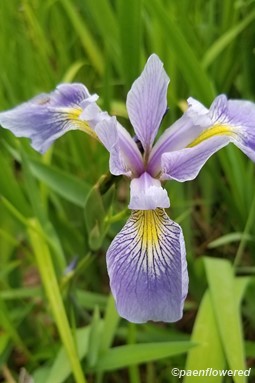
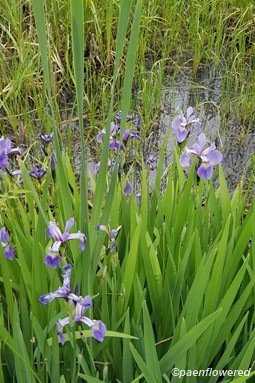
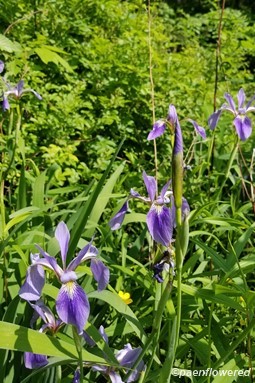
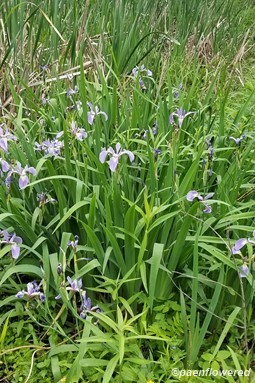
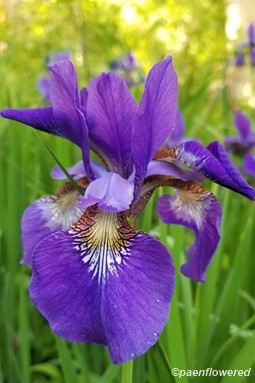
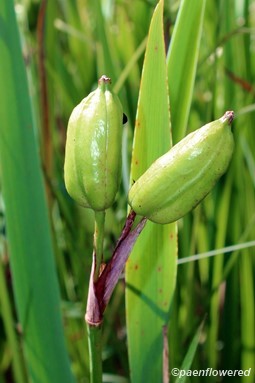
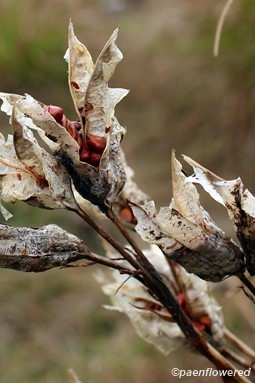




Comments
Have you spotted this plant in your area? We'd love to hear about your experience! Share your comments or questions about the plant below. Comments are moderated before posting.